The Independent Art Fair's great gift: eye contact. With vast ceilings, large windows, and no cubicle-style booths, people aren’t constantly scanning the room behind you to locate James Franco. This means no angry smiles, no high-speed nodding, and no cracked-out active listening. The tone is friendlier. Admission is free, and light is ample. Much of the work is genuinely interesting. Open space literally translates an air of transparency; though this is still no place for an art experience, it feels closer to an exhibition than a department store.
It's no surprise that the art looks great in the old Dia building. Installations and single-artist booths fare extremely well, and many of those galleries who got creative with their walls (I don't mean painting them black) are rewarding. Here are a few highlights:
Normally, seeing a Judith Scott work at an art fair would make me feel like throwing up in my mouth. The much-loved sculptor was deaf and severely affected by Down’s Syndrome, so much so that she likely would not have been able to negotiate terms of sales.
I don't mind it here so much. The Creative Growth Art Center in Oakland, CA, which provides representation and a studio space for adults with severe disabilities, is where Judith started her career. The Independent's exhibition format lends some dignity to the sales side of things.
I was able to take some time with Pedro Reyes's book series at Labor Gallery, whereas elsewhere, I might have overlooked such an extensive text project. Part of this is because of the large booth space, but also because many other works at the fair have already been worth some time investment.
In Surplus Reality, Pedro Reyes worked with the Landless Workers’ Movement to tell their real-life story of a conflict, resulting in the death of Elton Brum da Silva, through a comic book. According to a dealer at Labor, the original version was censored by the Mercosul Visual Arts Biennial because the workers had burned the land of one of the Biennial's heads. In response, the Landless Workers Movement released the original text. On view at the Independent are the censored version, the original, and English translations for each page.
Wolfgang Breuer's painting/photographs at Neue Alte Brücke achieve the same level of surreality as Cadmus or Tooker paintings, in part because they are so meticulously executed. Not until you get up close do you notice that the paintings within the paintings are actually real paintings on canvas, embedded in the surface of the panel with the hand-painted ink stripes. The figures are photographs, collaged on top of the ink drawing.
Note how ink droplets are reflected in the photographed wine glasses and tabletops: seamless. The figures interact with each other, creating a sense that they're all in the same parallel universe. All of this builds several different, convincing planes; when you notice that one figure is looking out at you, it is really jarring.
Gavin Brown is showing work by Oliver Payne and Uri Aran. Thomas Bayrle’s wallpaper is a nice touch.
Sprüth Magers made a z shape with their walls. This wasn't great for the work because everything was jammed in, but this attracted a lot of people, and it created a private space.
I didn't care much for Mac Adams's Pepon Osorio-style installation at Paris's gb agency, but it illustrates how well installation is served here.
The other end of the installation spectrum at Stuart Shave/Modern Art. I wasn't crazy about this work, either—too much information, too little reward—but it's another example of how conducive the space is to being transformed entirely.
Hologram! The word “IMAGE” spins in front of a changing backdrop (before space, it was a photo of apes).
London's Hotel Gallery, a fair co-founder, brought Alistair Frost. The clinical massage tables and aloe plant– with paintings of muted volume icons– combine with the white walls and concrete floor to make a culture-less office space. These empty, location-less objects remind me of the internet.

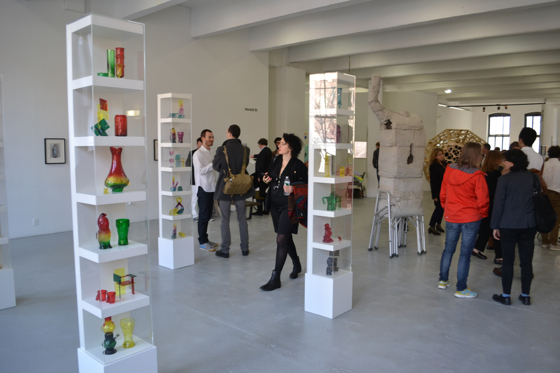
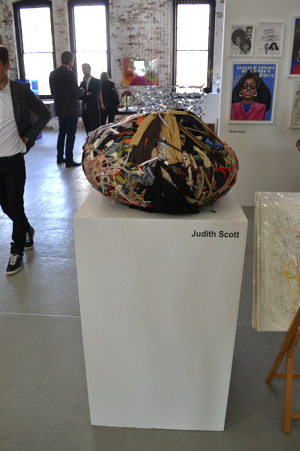

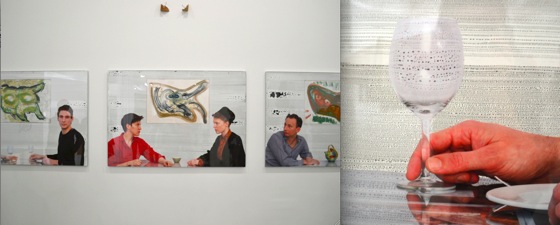
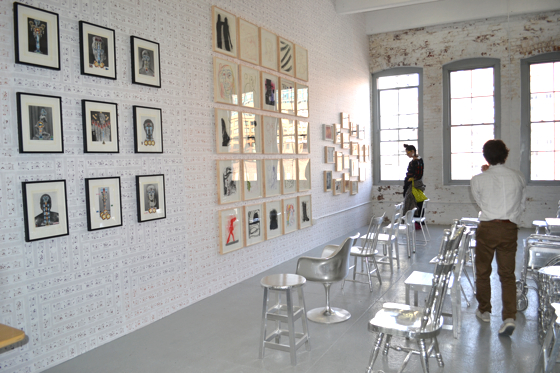

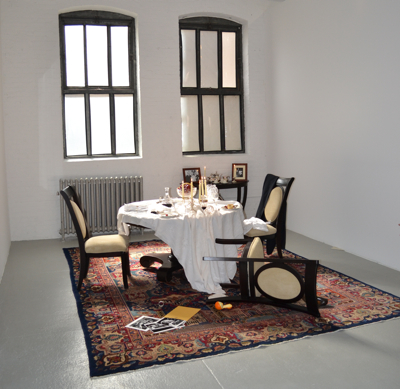

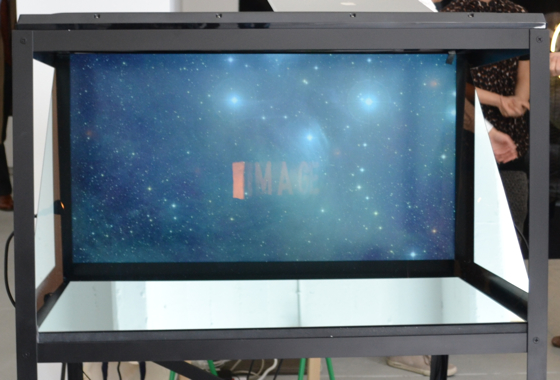


{ 2 comments }
I believe the work labeled above as Wolfgang Breuer at Neue Alte Brücke is actually by Will Benedict at Gio Marconi.
I believe that the above comment right about it being Will Benedict but the gallery was still Neue alte Brucke. Â
Comments on this entry are closed.